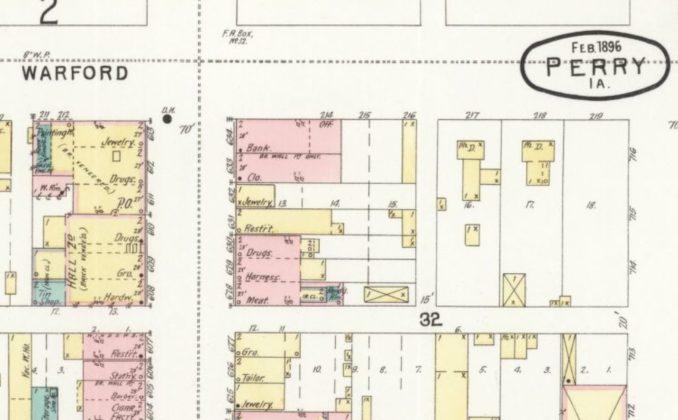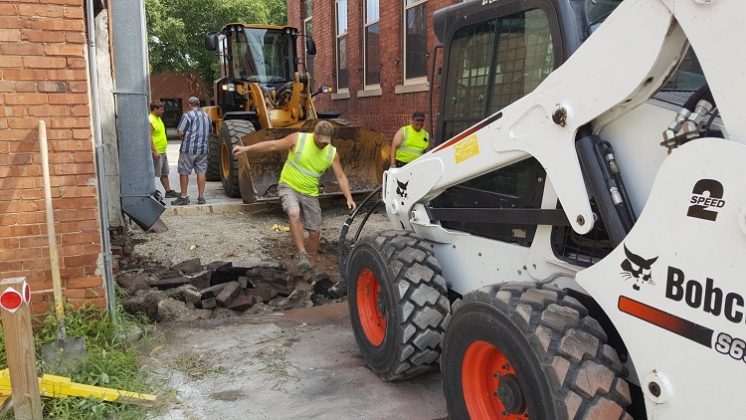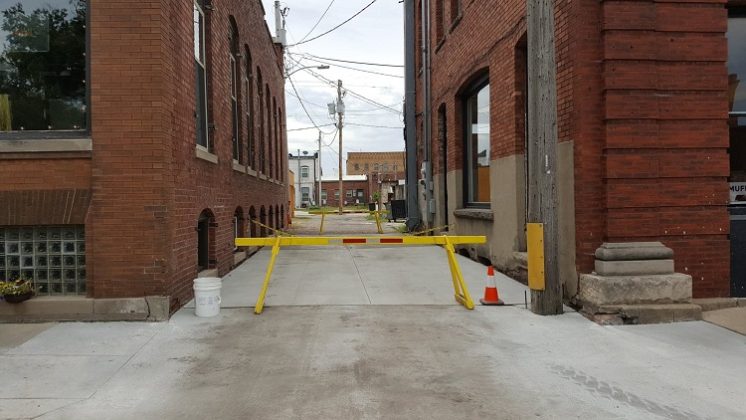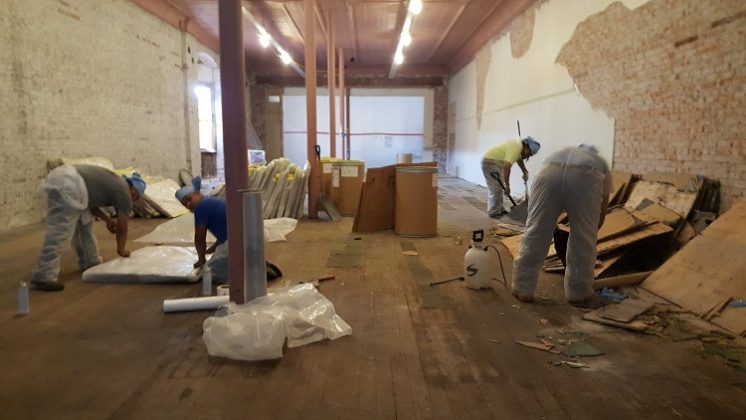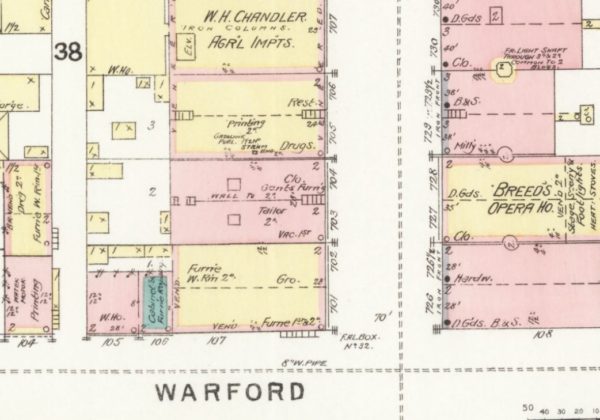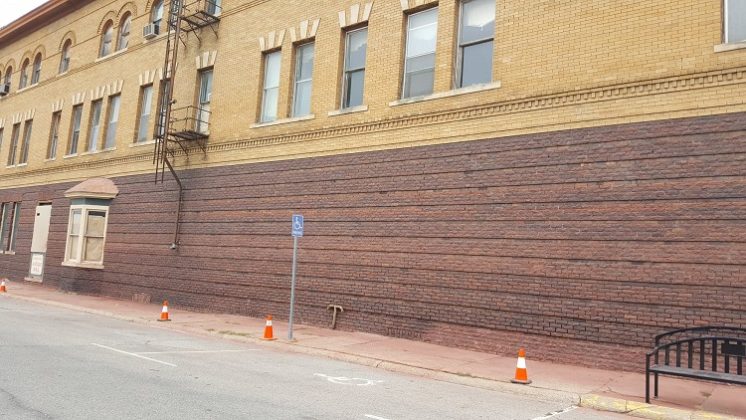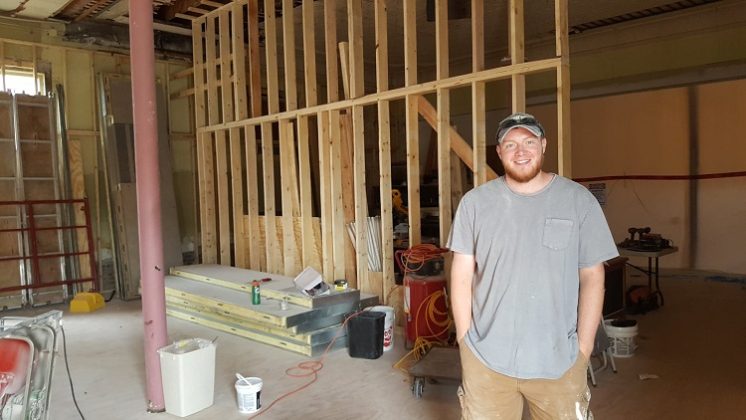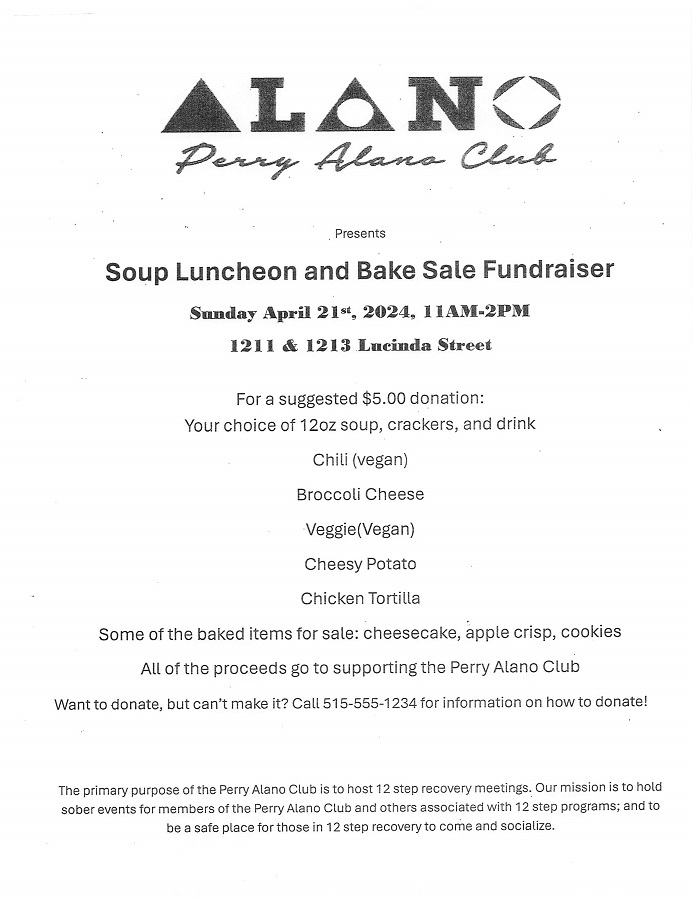
Downtown construction crews enjoyed rare glimpses of Perry’s long-buried history over the last few weeks as their restorations and rehabilitations have peeled back several layers of Perry’s past.
In one instance, laborers with the Perry Public Works Department repaved a portion of the half-block alleyway running south from Warford Street between Second and Third streets. According to the workers, the city’s jackhammer broke through two old layers of blacktop and to a layer of bricks beneath and farther downward to a concrete base that topped the original dirt.
The old rubble was removed, and a new concrete pad was poured between Warford and the southern edge of the old Dilenbeck Block, making for a safer and better-drained approach to the Perry Perk coffeehouse at 1201 Warford St. and the Mary Rose Collection at 1215 Warford St.
The old rubble of the alleyway is hard to date. An 1875 town plat shows only east-west alleyways in the blocks between Willis Avenue and Warford Street, but fire insurance maps from 1888 and 1896 plainly show the half-block alley running south from Warford Street. At 15 feet in width, the alley is narrower than the 20-foot standard seen elsewhere downtown.
The buildings on either side of the alleyway are easier to date. The Dilenbeck Block at 1124-1126 Second St., now housing Haaland Financial Services and Perry Perk, was begun in 1893 and completed in 1898, narrowly escaping the big fire of 1898. The old Northwestern Bell Telephone office, now home to Mary Rose, was erected in 1912.
If the narrow alley between the buildings existed by 1888, when was it first paved? Perry’s sidewalks, just like its streets, originated in dirt. Cinders and wooden planking were later laid down for foot travelers, but “not until 1897,” according to Eugene Hastie’s county history, “did cement begin to be used for this purpose.” According to Marjorie Patterson’s history, “By August 1900, the cement walks were being put in.”
Paved streets came along a few years later. The first three miles of street paving was accomplished in 1909 and 1910, according to Patterson, with some streets laid with asphalt and others paved with creosote blocks.
Dirt alleyways can still be seen here and there around town, but not in the downtown business and cultural district. The narrow alley’s lowest layer of concrete, dug up in recent weeks by the city crew, might date from the turn of the 20th century and the era of the first sidewalks, but this is not certain. When the way was paved with bricks is equally uncertain.

A second historical unearthing has been ongoing since March at the old Gamble Block at 1203 Second St., which is transitioning into a sports bar under the direction of Adam Sheffer of Indianola and Zach Thomas of Perry.
The Gamble Block, erected in 1899 and now on the National Register of Historic Buildings, recently housed the Mandarin Cafe and Stitches in Time antiques on the ground floor, with 15 one-bedroom apartments and two large offices on the second and third floors.
Sheffer’s workers are currently performing asbestos abatement in the interior of the 119-year-old structure, including removing plaster from the walls and exposing the original brick. The debris is as hard to date as the alleyway rubble.
It is hard to imagine to violence of the fire that destroyed the previous Gamble’s Furniture store. The November 1898 fire consumed both sides of Second Street — 22 businesses in all, including the Chandler block on the west side and the Breed block on the east — from Lucinda Street southward to Warford Street.
Both sides of the streets were promptly rebuilt bigger and better than before. Perry in 1900 was just hitting its stride and today in 2018 is getting its second wind. Sheffer said he hopes to have the new restaurant open by November.







